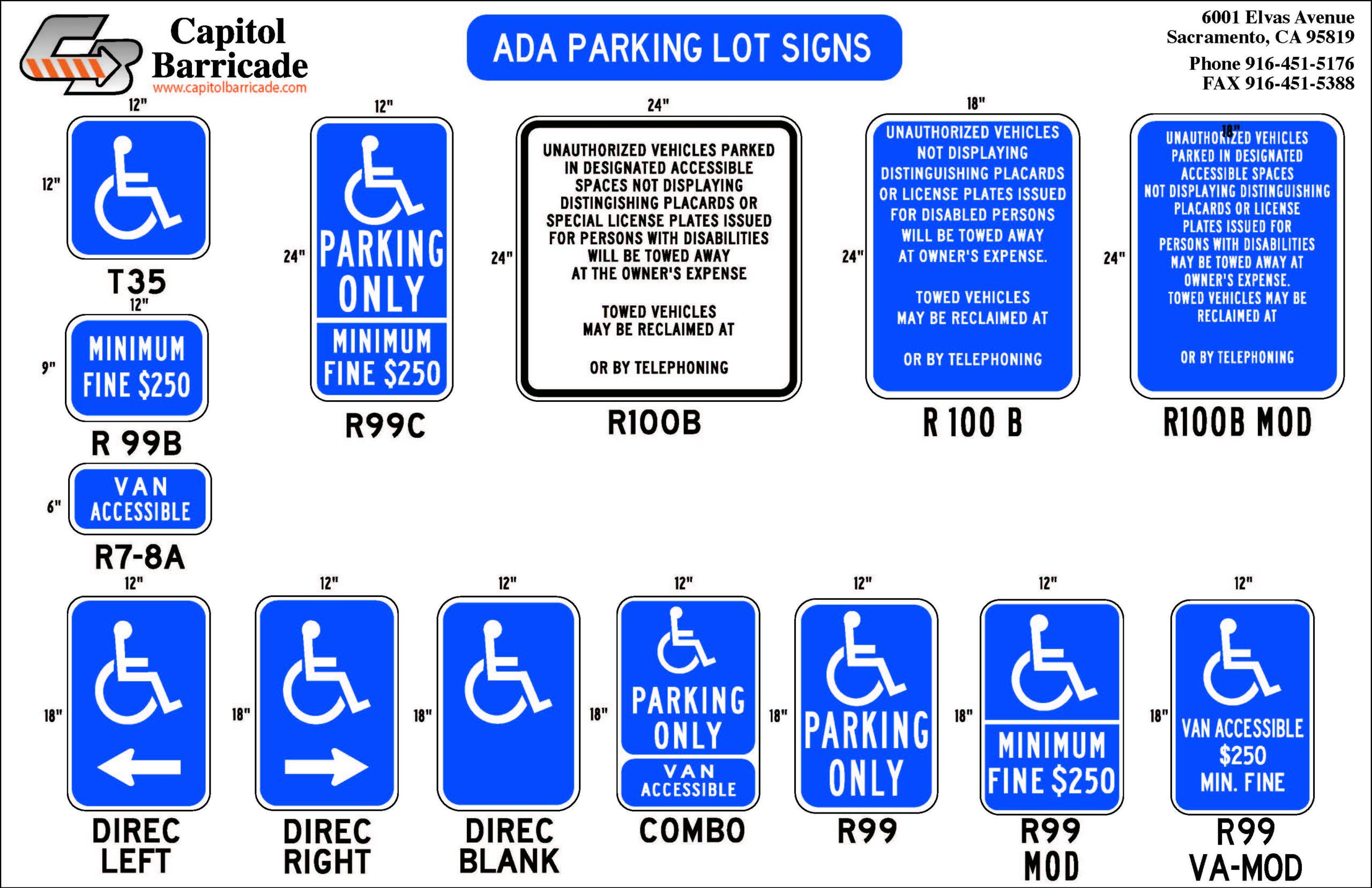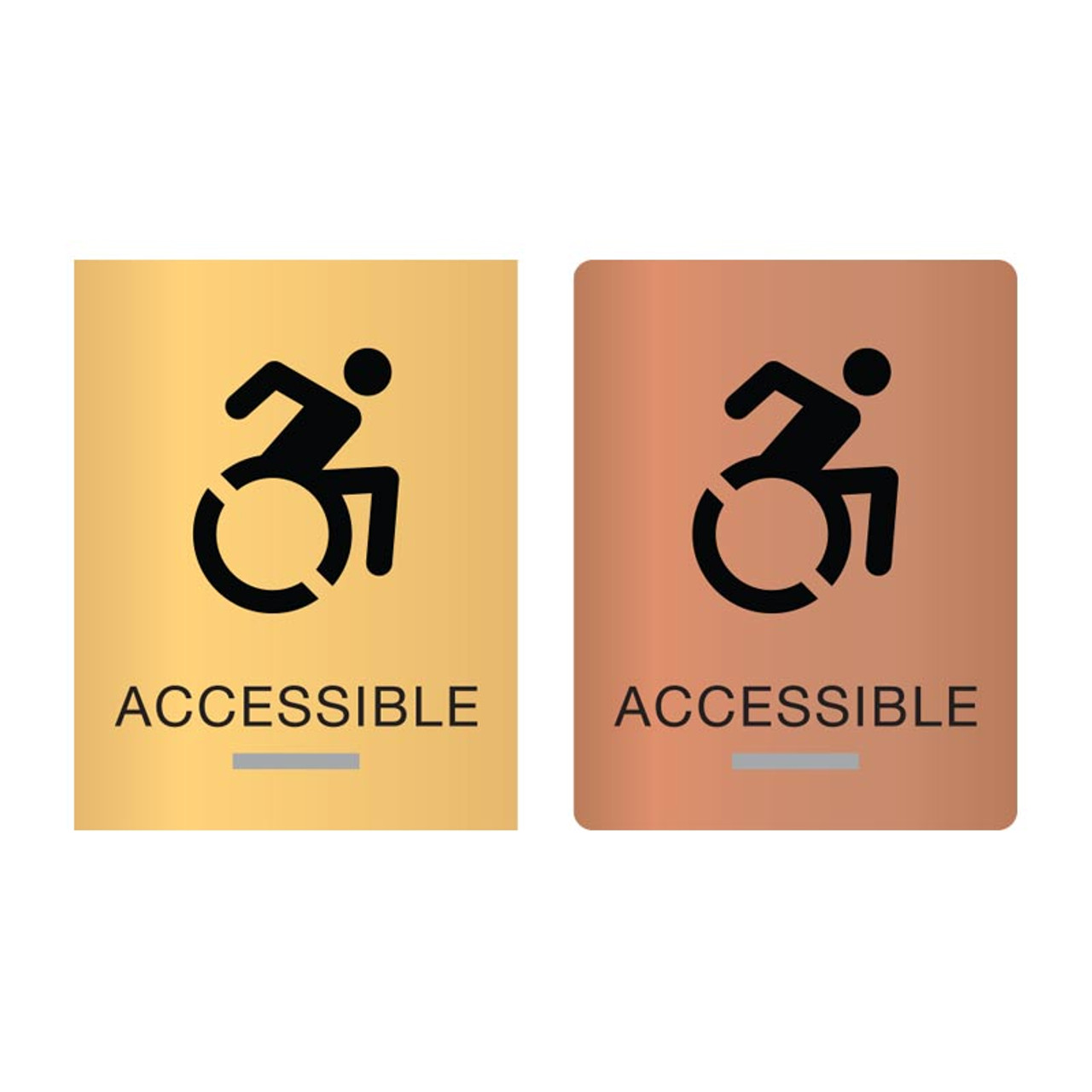The Benefits of Using Top Quality ADA Signs in Your Organization
The Benefits of Using Top Quality ADA Signs in Your Organization
Blog Article
Exploring the Secret Functions of ADA Signs for Boosted Access
In the realm of access, ADA signs serve as silent yet powerful allies, making sure that areas are inclusive and navigable for individuals with handicaps. By incorporating Braille and tactile elements, these indications break barriers for the visually damaged, while high-contrast shade systems and clear typefaces cater to diverse visual demands.
Significance of ADA Conformity
Making certain compliance with the Americans with Disabilities Act (ADA) is important for cultivating inclusivity and equivalent access in public areas and offices. The ADA, enacted in 1990, mandates that all public facilities, employers, and transportation services fit people with disabilities, ensuring they delight in the exact same rights and chances as others. Conformity with ADA requirements not just meets legal obligations however likewise boosts an organization's credibility by showing its dedication to variety and inclusivity.
One of the key aspects of ADA conformity is the application of available signage. ADA signs are made to make sure that individuals with handicaps can conveniently browse through spaces and buildings.
In addition, sticking to ADA laws can minimize the danger of potential penalties and legal consequences. Organizations that fail to abide with ADA guidelines might face fines or suits, which can be both harmful and financially difficult to their public image. Therefore, ADA conformity is essential to cultivating an equitable atmosphere for everyone.
Braille and Tactile Aspects
The unification of Braille and responsive elements into ADA signs personifies the concepts of ease of access and inclusivity. It is usually positioned under the corresponding text on signage to make sure that people can access the details without visual assistance.
Responsive aspects extend beyond Braille and include increased characters and icons. These elements are made to be discernible by touch, allowing individuals to determine space numbers, restrooms, exits, and various other critical locations. The ADA establishes particular standards relating to the size, spacing, and placement of these responsive components to enhance readability and guarantee consistency throughout different environments.

High-Contrast Shade Plans
High-contrast color schemes play an essential function in enhancing the presence and readability of ADA signage for individuals with aesthetic impairments. These schemes are necessary as they take full advantage of the difference in light reflectance in between message and background, making certain that indications are easily noticeable, even from a range. The Americans with Disabilities Act (ADA) mandates using details shade contrasts to accommodate those with minimal vision, making it a vital aspect of compliance.
The efficiency of high-contrast shades depends on their capability to stand out in different lights problems, consisting of dimly lit atmospheres and locations with glare. Usually, dark text on a light history or light message on a dark background is utilized to attain optimal comparison. Black text on a yellow or white background offers a raw aesthetic distinction that helps in fast acknowledgment and comprehension.

Legible Fonts and Text Size
When considering the style of ADA signs, the option of understandable typefaces and appropriate message dimension can not be overemphasized. These components are essential for guaranteeing that indications are obtainable to individuals with visual problems. The Americans with Disabilities Act (ADA) mandates that typefaces need to be not italic and sans-serif, oblique, script, extremely ornamental, or of uncommon type. These demands assist guarantee that the message is quickly understandable from a distance and that the characters are distinguishable to diverse audiences.
The dimension of the message additionally plays an essential function in ease of access. According to ADA standards, the minimal message height should be 5/8 inch, and it needs to boost proportionally with seeing distance. This is specifically vital in public his response areas where signage needs to be reviewed swiftly and accurately. Consistency in message size contributes to a natural visual experience, assisting individuals in navigating settings effectively.
In addition, spacing between lines and letters is important to readability. Appropriate spacing prevents personalities from appearing crowded, enhancing readability. By sticking to these standards, developers can considerably boost availability, making sure that signage serves its desired purpose for all people, despite their visual capabilities.
Efficient Positioning Strategies
Strategic positioning of ADA signs is crucial for making the most of accessibility and guaranteeing compliance with legal standards. ADA guidelines stipulate that indications should be installed at a height in between 48 to 60 inches from the ground to ensure they are within the line of view for both standing and seated individuals.
Additionally, indicators should be positioned nearby to the lock side of doors to enable easy recognition before entrance. Consistency in indication placement throughout a center enhances predictability, lowering confusion and boosting general user experience.
Final Thought
ADA indicators play a vital function in advertising ease of access by incorporating features that attend to the demands of individuals with specials needs. Including Braille and tactile aspects makes certain vital details comes to the aesthetically impaired, while high-contrast shade systems and readable sans-serif typefaces improve presence throughout various illumination problems. Reliable positioning techniques, such as proper installing heights and calculated areas, better facilitate navigation. These elements collectively foster an inclusive environment, underscoring the significance of ADA compliance in guaranteeing equal access for all.
In the realm of availability, ADA indicators offer as quiet yet effective allies, ensuring that rooms are navigable and inclusive for individuals with handicaps. The ADA, passed in 1990, mandates that all public centers, employers, and transportation solutions fit individuals with impairments, guaranteeing they take pleasure in the exact same rights and opportunities as others. ADA Signs. ADA indicators are made to make sure that individuals with handicaps can quickly navigate via buildings and rooms. ADA standards state that signs need to be installed at an elevation between 48 to 60 inches from the ground to ensure they are within the line of view for both standing and seated individuals.ADA indicators play an essential function in advertising availability by integrating attributes that resolve the demands of individuals with impairments
Report this page